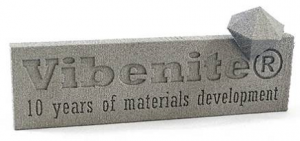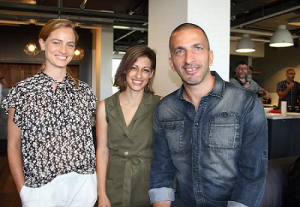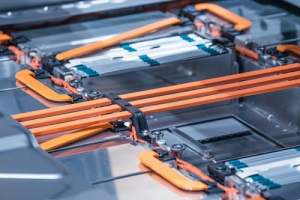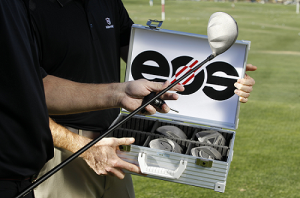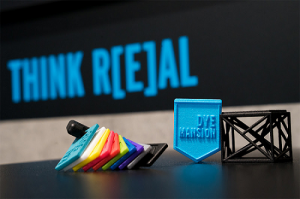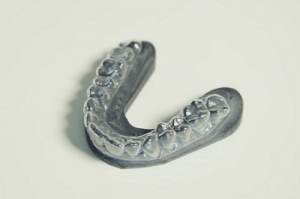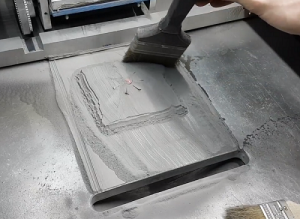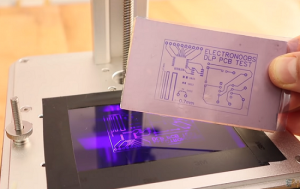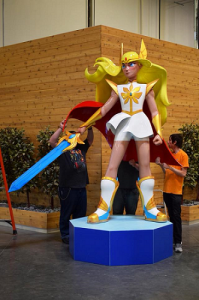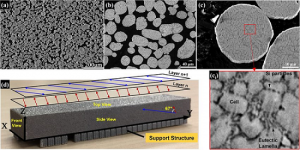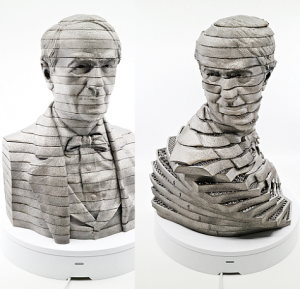We’re getting the business out of the way first, then moving on to awards and rewards in this edition of 3D Printing News Briefs. CECIMO has expressed its approval of a new 3D printing nomenclature standard, and there’s a new design competition in town. Weerg announced the winner of its 3D Printing Project Award, and Formlabs is rewarding its loyal customers with a discount. Finally, a 3D printed Harry Potter statue flies high at a store in India.
CECIMO Welcomes New Classification Provision for 3D Printers
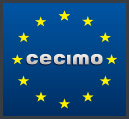 CECIMO, the European Association of the Machine Tool Industries, is glad to hear about the approval and introduction of a new product nomenclature standard, used by over 200 countries, for additive manufacturing systems. The nomenclature, known as Harmonized System and used by authorities to classify goods in international trade, is maintained by the World Customs Organisations (WCO). The classification code was first proposed by the EU on the basis of input from CECIMO, and will improve statistics collection on the international trade of AM machines by material used, in addition to promoting the inclusion of these systems in bilateral or multilateral trade deal talks around the world. The new code will go into use starting January 1, 2022.
CECIMO, the European Association of the Machine Tool Industries, is glad to hear about the approval and introduction of a new product nomenclature standard, used by over 200 countries, for additive manufacturing systems. The nomenclature, known as Harmonized System and used by authorities to classify goods in international trade, is maintained by the World Customs Organisations (WCO). The classification code was first proposed by the EU on the basis of input from CECIMO, and will improve statistics collection on the international trade of AM machines by material used, in addition to promoting the inclusion of these systems in bilateral or multilateral trade deal talks around the world. The new code will go into use starting January 1, 2022.
“Standardization is of vital importance in the industrialization of AM. Work is progressing on standards on materials, processes and applications,” said Filip Geerts, Director General at CECIMO. “In addition to standardization, we are glad to have contributed to the inclusion of AM machines in the systematic list of commodities applied by most trading nations in the world. This action will fill another vacuum in the standards’ landscape, leading to greater official intelligence on AM machine market dynamics and, therefore, helping to draft more accurate strategies for the AM sector.”
Conserv Opened New Design Competition
 Alabama tech startup Conserv, which builds sensor solutions to help places like museums, archives, and libraries preserve cultural heritage, is a big fan of 3D printing and rapid prototyping. Conserv has heard from its customers that they want to “minimize the visual disruption caused by things other than the art in a space,” which is why it’s decided to hold its own 3D design competition to find the next design iteration for its sensor platform. The prize for the winning design, which will be chosen by the startup’s own customers, is $5,000 cash.
Alabama tech startup Conserv, which builds sensor solutions to help places like museums, archives, and libraries preserve cultural heritage, is a big fan of 3D printing and rapid prototyping. Conserv has heard from its customers that they want to “minimize the visual disruption caused by things other than the art in a space,” which is why it’s decided to hold its own 3D design competition to find the next design iteration for its sensor platform. The prize for the winning design, which will be chosen by the startup’s own customers, is $5,000 cash.
“While sensors are necessary to ensure the integrity of a collection, they often look out of place, not in harmony with the carefully curated objects that people come to see,” the competition description states.
“How can we change that? How can we push the art of sensor design further so it looks more like, well, art! What does great look like in this space? How can we design a device that doesn’t look out of place in a gallery curated by the most discerning professionals while still retaining all of the features that fulfill demanding technical requirements? Can we create an object that is unassuming and functional, designed to blend in, but at the same time elicits joy when it is noticed?”
Requirements include that the solution must be designed for wall mounting, with vents for air flow, to blend into a museum environment, and for a high volume manufacturing process, like injection molding. Entrants need to provide a design sketch or rendering and a description of how the design meets the requirements, and a 3D model file for a 3D printed prototype of the device, by May 17th. For other questions and details, email nmcminn@conserv.io.
Winner Announces for Weerg 3D Printing Project Award
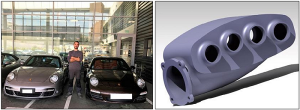 Earlier this month, Italian 3D printing and CNC machining platform Weerg opened the second edition of its 3D Printing Project Award contest, which promotes creativity, experimentation culture, and innovation in design manufacturing. This week, Weerg announced that Benjamin Nenert, a designer and specialized technician for Porsche, is the winner of its 2019 3D Printing Project Award: a €500 Weerg voucher. Nenert, who lives in France, also manages his own vintage Porsche repair and refurbishment business, Ben Auto Design on top of his day job. His award-winning project is a component for a 1983 Porsche engine that he’s currently restoring.
Earlier this month, Italian 3D printing and CNC machining platform Weerg opened the second edition of its 3D Printing Project Award contest, which promotes creativity, experimentation culture, and innovation in design manufacturing. This week, Weerg announced that Benjamin Nenert, a designer and specialized technician for Porsche, is the winner of its 2019 3D Printing Project Award: a €500 Weerg voucher. Nenert, who lives in France, also manages his own vintage Porsche repair and refurbishment business, Ben Auto Design on top of his day job. His award-winning project is a component for a 1983 Porsche engine that he’s currently restoring.
“It is a very important component because it will allow you to extract more power from the engine by converting it to a more modern electronic management system. I could also have tried to modify the original part, but it would have taken a long time, with a very bad result for the performance I was aiming for,” Nenert explained. “The 3D-printed part has all the requirements I was looking for: perfect design, heat resistance up to 100 °C and sturdiness.”
Formlabs Offering Loyalty Discount to Customers
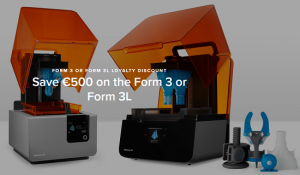 In a very smart move, Formlabs is wisely rewarding its loyal customers with a great discount if they’re interested in upgrading their Form 2 3D printer to the new Form 3 or Form 3L. The company explained that customers simply need to confirm the ownership of their own Form 2 by May 31st, 2019 in order to receive a €500 discount on the purchase of a Form 3 or Form 3L. Then they can add to their fleet of Formlabs systems; again, this is a good choice by Formlabs in order to keep its customers coming back for more.
In a very smart move, Formlabs is wisely rewarding its loyal customers with a great discount if they’re interested in upgrading their Form 2 3D printer to the new Form 3 or Form 3L. The company explained that customers simply need to confirm the ownership of their own Form 2 by May 31st, 2019 in order to receive a €500 discount on the purchase of a Form 3 or Form 3L. Then they can add to their fleet of Formlabs systems; again, this is a good choice by Formlabs in order to keep its customers coming back for more.
To confirm your Form 2 and receive your loyalty discount, share an image of the serial name on the printer’s back panel in the format “AdjectiveAnimal.” You can either get in touch with a member of the company’s sales team, or submit the information online. You’ll either get your unique loyalty discount through an email within one business day, or the sales team will apply it to your purchase. Redeem the discount in the Formlabs online store, or contact the sales team, to buy your discounted Form 3 or Form 3L 3D printer.
STPL 3D Makes 3D Printed Harry Potter Statue
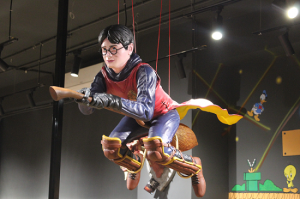 India-based rapid prototyping services company STPL 3D Printing (STPL3D) is continuing with its 3D printed statues of fictional characters. Not long after we heard about the 3D printed Spiderman statue the company made for a customer, another one of its clients requested a 5-foot 3D printed sculpture of Harry Potter for their store. STPL3D had just five days to transform the 2D images it was given into a detailed sculpture, and they got right to work. The company’s in-house designer divided the job into 25 smaller parts that would be easy to print, and once these were completed and post-processed, the team assembled the statue and delivered it to the client’s merchandise store. Using STPL3D’s technology and service, the client had a 40% reduced cost, 70% weight reduction, and saved nearly a month of time on the project.
India-based rapid prototyping services company STPL 3D Printing (STPL3D) is continuing with its 3D printed statues of fictional characters. Not long after we heard about the 3D printed Spiderman statue the company made for a customer, another one of its clients requested a 5-foot 3D printed sculpture of Harry Potter for their store. STPL3D had just five days to transform the 2D images it was given into a detailed sculpture, and they got right to work. The company’s in-house designer divided the job into 25 smaller parts that would be easy to print, and once these were completed and post-processed, the team assembled the statue and delivered it to the client’s merchandise store. Using STPL3D’s technology and service, the client had a 40% reduced cost, 70% weight reduction, and saved nearly a month of time on the project.
“3D printing helps artists transform ideas into tangible works of art. Artists from creative and entertainment domains can truly unleash their imagination to create new and exciting objects. 3D printed art models aims to expand the horizons of design and foster a culture of aesthetic innovation,” said STPL3D’s CEO Rahul Gaywala.
Discuss these stories and other 3D printing topics at 3DPrintBoard.com or share your thoughts in the comments below.



